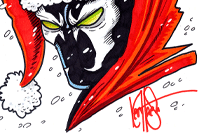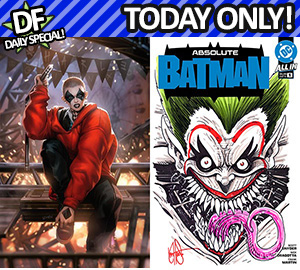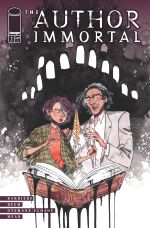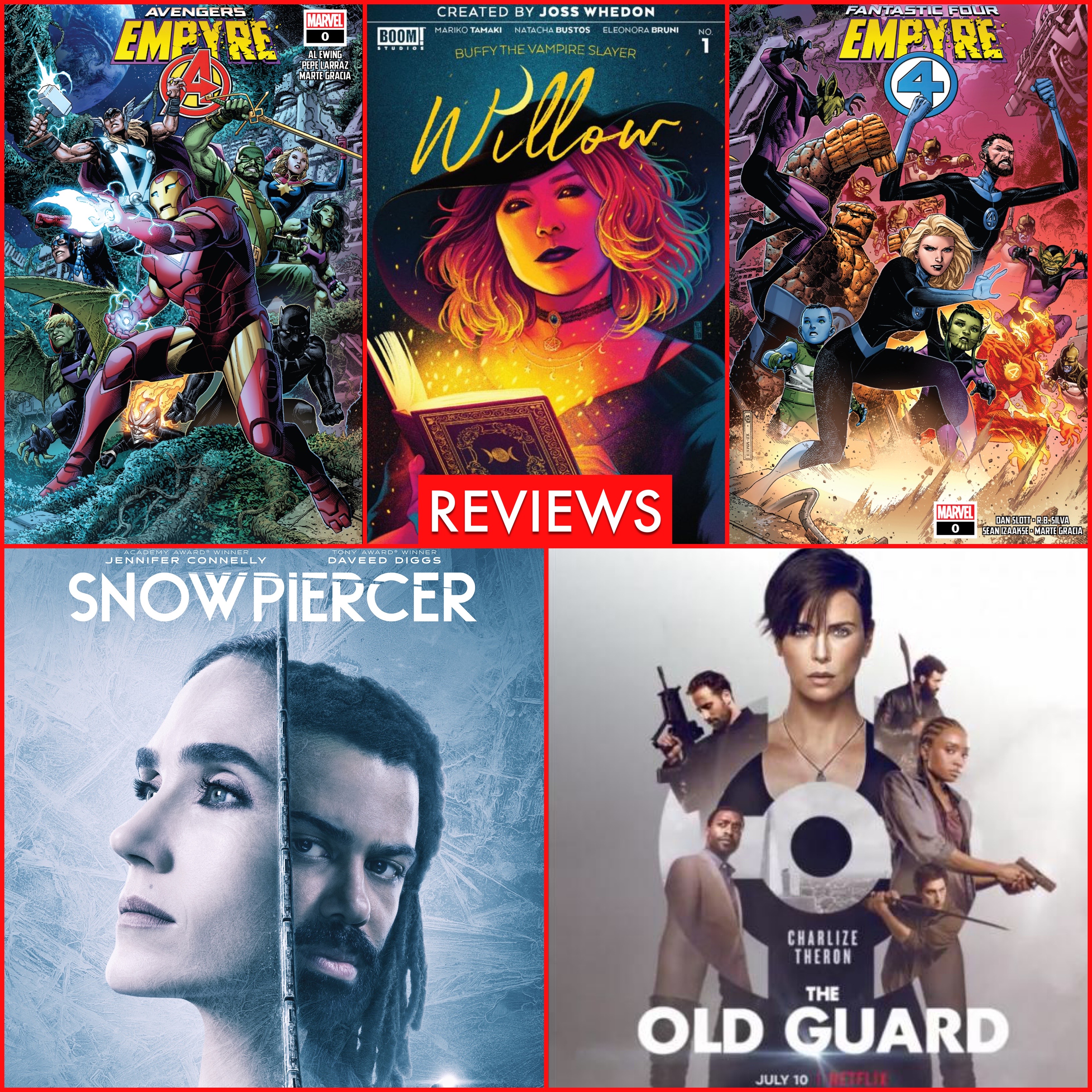BOB LAYTON
 SEND THIS TO A FRIEND! SEND THIS TO A FRIEND!
DF Interview: Bob Layton recalls bringing the shine to Iron Man, more By Byron Brewer Comics legend Bob Layton, famed forever for his work at Marvel Comics on Iron Man and for the early days of Valiant, has packed up and moved from the comic book page to Tinsel town – Hollywood – these days. And lately it seems that the comics are following him. Even though the small AND large screens are his purview now, Layton’s heart has never left Stark, Herc and his other comic book pals. In this interview, Layton reflects back on a lifetime of giving us fanboys absolutely outstanding and quality entertainment. Dynamic Forces: Bob, tell me about the humble beginnings back in my era of starting comics, the early 1970s. What was CPL, and what did it do for the careers of Roger Stern and yourself? Bob Layton: I met Roger Stern (who worked for a local radio station in Indianapolis.) through an ad in the Comics Buyers Guide and we began publishing fanzines out of my little apartment. During that time we hooked up with a Canadian fan artist named John Byrne and the three of us formed the basis of our fan publishing alliance. CPL (an overblown moniker which stands for Contemporary Pictorial Literature) was our main 'zine. It was an extremely-popular, digest-sized fan publication and eventually led us into a working alliance with Charlton Comics, with Sterno and me producing and publishing the now-famous Charlton Bullseye magazine. Subsequently, Byrne, Stern and I all moved on to bigger and better things in the comic industry from those humble beginnings at CPL. DF: Tell me about working as apprentice for the great Wally Wood, whom I will always associate with Daredevil the way modern audiences, I guess, associate Frank Miller with DD. Bob Layton: The close association with Charlton (and production wizard, Bill Pearson) led to my meeting Wally Wood and becoming one of his apprentices. Once I went to work for Woody, doors started opening up for me all over the place. While apprenticing with Wood, I stared getting inking work with Charlton, DC and Marvel while continuing to publish my amateur fanzines, including Woody‘s legendary fan publication, Witzend. Woody was a great teacher, but a troubled soul. My time with him was bittersweet. I learned so much, on what to do AND what not to do in my career. My fondest wish is that I could have met him at a better time in his life, not towards the end. DF: I know there has been some animosity with the current Marvel regime, but the 1970s House of Ideas was where I discovered Bob Layton. Do you mind telling me about a moment between John Romita and a young Bob Layton regarding George Tuska’s Iron Man? Bob Layton: One day, I was in the Marvel offices…handing in Woody's pages to the production department. So, I used the opportunity to show my samples around while I had “my foot in the door”. When I passed the Art Director's office, I heard John Romita Sr. on the phone, frantically trying to find someone to ink a desperately late issue of Iron Man by George Tuska. Blissfully unaware of the consequences, I stuck my head in his doorway and said I could get the job done in the four or five days that was left on the schedule. It was an utter fabrication…but I REALLY wanted to work for Marvel Comics! Johnny gave me the pages and said, "Show me what you can do, Kiddo." Panicking, I ran down Madison Avenue to Continuity Associates, where a lot of my fledgling contemporaries worked for Dick Giordano & Neal Adams. (The gang at that time was comprised of Terry Austin, Bob Wiacek, Joe Rubinstein, Bob McLeod, Carl Potts and others) Like the troupers that they all were, they pitched in on the inking and we finished the entire book in less than four days. It was awful but at least publishable. However, once I turned the Tuska job in, I didn’t hear back from Marvel. I was sure I had permanently destroyed any chance of ever getting work there again. But as you know, I got Champions and the rest is history. DF: So that was your first work for Marvel? Bob Layton: About a month after my first tryout job (the infamous George Tuska Iron Man ink assignment), a package arrives on my doorstep. I open it to find a complete issue of pencils on The Champions. I presumed that it was sent to me in error, so I called the Marvel offices to see where they want me to forward the material. But to my utter amazement, art director John Romita Sr. tells me that I'm the new regular inker on the book! DF: You had a very close and special relationship with the venerable Dick Giordano, correct? Bob Layton: Yes. Dick Giordano was my role model, right up until the end, facing his own demise with gentle humor and unwavering courage. He faced his own death the same way he tackled life... fearlessly. I spent the last few weeks of Dick Giordano's life sitting (and sleeping) in his hospital room as he fought to stay on this planet. I know its normal human behavior to grieve after a personal loss. But there’s not a day that goes by when he isn’t in my thoughts. Dickie was the closest thing I've ever known to a father. We had been friends and colleagues since I was a boy of 19 years. Few can boast of the degree of success he experienced in his long and illustrious career. The comic industry is well aware of the monumental contributions he made. What they may not be aware of is that -- I am one of them. I owe so much to his wisdom and insightful instruction, not merely about the job...but how to conduct one’s self through life. My career, my successes, should be as much a part of Dick Giordano’s legacy as anything else he personally accomplished. DF: I can safely attest that Iron Man was my favorite book of the 1970s and ‘80s because of the intriguingly complex emphasis David Micheline and you put on Stark. If memory serves, you began with issue #116 (November 1978) and continued through #153 and later David and you came back for a long second run in the #200s. Can you talk about that creative effort? Bob Layton: I was a big fan of the premise of Iron Man when I was young. However, I was also frustrated that Iron Man never really looked shiny and metallic when I was a kid. I even created my own Iron Man stories when I was young and dreamt up concepts for variant specialty armors. So, when I actually got to Marvel and fulfilled my dream of being able to work on Iron Man, I was able to inculcate those stories and designs that I dreamt up as a kid into the regular series. The now-classic Camelot Saga and the introduction of Iron Man specialty armors were a direct result of those childhood fantasies. David and I formed our partnership at DC, working together on Star Hunters and Claw: The Unconquered. While there, we had agreed to leave the company for greener pastures. We both sensed the impending “implosion” and didn't want to be a casualty of it. Together, we went to Marvel and interviewed to work as a team there. We were given a choice of three lower end books to work on and I jumped out of my seat when I realized that Iron Man was one of those options. That was the one book in the entire industry that I wanted to do more than any other. At the time we took Iron Man over, the book was in danger of cancellation and was in desperate need of revitalizing. In my opinion, when we took over the series, Tony Stark was little more than a vehicle used to get the armor on him and go into action. I felt that it was more important concentrate on the man inside the suit than the suit itself. That’s why we introduced an entire cast of new supporting characters and changed the emphasis of the series to the world of corporate intrigue. Together, we retooled the series into the way I had always imaged it could be. David Michelinie was never a “hardcore Marvel fan” in his youth. David's lack of a personal history with Iron Man’s mythology proved to be a tremendous asset--translating into his fresher approach to the character. We had a 50/50 relationship on the plots, with both of us contributing equally to the story and character development. I also was attracted to the character because he doesn’t have super powers like Superman or Spider-Man. His abilities come from the technology created by his own genius, which makes him much more credible to me as a creator. By the time we left, sales had grown to around half-a-million copies a month. So we must have done something right! After that first run, David and I split for a time to pursue solo careers. I went on to write and draw the two Hercules mini-series and Secret Wars and David moved on to write Avengers and Amazing Spider-Man. Then, years later, after the Iron Man sales began to tank again, we were asked to come back to Iron Man to revitalized it once more, first with my Silver Centurion armor design and then, with the highly-successful story arc—“Armor Wars”. When we returned, it was obvious that the previous creative teams had strayed away from the groundwork we had laid with our first run. So, we concocted the Armor Wars saga as a vehicle to put things right. I guess it worked! DF: Many of your creations later became Stark staples, and things that really made the book interesting (aside from your great art!): Tony’s alcoholism, Bethany Cabe, Rhodey (later War Machine), Justin Hammer and the wonderfully edgy relationship between Stark and Madame Masque. Thoughts on these from the day? Bob Layton: On the original two runs of Iron Man, my favorite supporting characters were Jim Rhodes, Bethany Cabe, Justin Hammer and Mrs. Arbogast, Tony’s personal secretary. All of these were characters who fulfilled a need in the series for normal human foils for Stark to bounce ideas and share conflicts with. Mrs. Arbogast was particularly fun because of her acerbic wit and her immunity to Tony’s charm. We had no idea that Jim Rhodes would be such a mainstay when David and I created him back in Iron Man #118. He evolved from a small supporting role into a large player in our storylines. I don't think we knew at the time how big he would become in the series. There weren't a lot of strong African American characters in the Marvel Universe at that time and we wanted to give Tony a foil with a dissimilar background from his own. One of the biggest problems with comics in general is that few are couched in the real world. Our supporting characters existed to ground the reader in a sense of reality. Through their eyes, we witness the fantastic and react in a believable human manner. DF: Of course, one of my most cherished pieces of comics collecting are Parts 1 and 2 of your Hercules cosmic comedy. I really enjoyed that as well as how you took familiar concepts like a Rigellian Recorder and stood them on their heads. Can you discuss your days with Herc? Bob Layton: Along with my contributions to Iron Man's lexicon and to the Valiant Universe, Hercules ranks right up there as one of the more positive legacies of my career. It’s something that I very proud of. I wanted to do a “coming–of-age” story and the idea of doing it with a 5000 year old Greek demi-god tickled my funny bone. In the Marvel Universe, prior to my series, Herc had always been portrayed by Stan Lee as a conceited, arrogant, but likable prick. My childhood memories, from his early appearances in Thor, were of Hercules bashing people just for the sport of it! So, he seemed to be the perfect subject for me to experiment with. It was time for Herc to grow up a bit and develop a small degree of self-awareness. I’ve always had a soft spot for forgotten secondary characters and he was no exception. Additionally, I had always wanted to try my hand at writing comedy and Herc was a perfect foil for my particular brand of humor. Fortunately, since he was an immortal, I could take the character out of the current continuity and place him in a time and place that wouldn’t have immediate repercussion to the monthly books or his appearance in Avengers. You’re correct that the Hercules mini-series was the first in comic history, released in conjunction with Frank Miller's Wolverine project. At that particular time, Marvel was looking to experiment with concepts that had a finite beginning and end. When I heard that, the notion of doing Hercules as a limited series popped into my head. I’ve always loved tongue-in-cheek adventure movies like the The Three Musketeers or The Adventures of Robin Hood. The idea came to me to create something in that genre, but capitalize on the science-fantasy craze that Star Wars had created at that time. However, it took a bit of pushing to have a finite series about a drunken super-hero published at Marvel. I felt that the Marvel books, as terrific as they were at that particular period, took themselves WAY too serious with stuff like Frank Miller’s Daredevil, [Chris] Claremont’s X-Men and even our Iron Man, for that matter. I wanted to do something to lighten things up in the House of Ideas a bit. The biggest problem was convincing the editorial powers-that-be that poking fun at the Marvel Universe wouldn't do permanent damage to the comic company as a whole. Otherwise, it was a breeze. In many ways, Hercules was an analog to the events in my own life at the time. During that period, I was very much an arrogant “party boy” myself. So, in some ways, doing the project was cathartic. The most memorable consequence of working on the Hercules mini-series was that it truly launched my career as a writer in the comics industry. Thanks to the success of the two volumes, and the subsequent graphic novel “Full Circle”, I was able to fulfill my career goal of becoming a mainstream writer/artist, which had always been my desire since entering the profession. And after Hercules, I was very fortunate to have had many great opportunities offered to me as a result. And the weirdest thing about it: Hercules was a HUGE hit in France, for some unfathomable reason. The French have reprinted the series several times and I still get Hercules fan mail from France to this day. Apparently I’m the comic book equivalent of Jerry Lewis?! DF: Bob, you were one of the chief architects of the Valiant Universe and creator of many of its characters, most notably X-O Manowar. Any stories you would care to share, or opinions on Valiant today? Bob Layton: Valiant was a grand experiment that had high incredible highs…and unbelievable lows. In many ways, it was the Camelot of comic book companies…a wondrous time that this industry will probably never see again. We were a family…with everyone sharing in the work and benefits. We all knew it wouldn’t last…but it was great while it did. Most of us still keep in touch—twenty-some years later, because of the bond that we shared as cogs in that huge, creative dream machine. My feelings about the new Valiant? I wish Dinesh, Fred and Warren all the best. I have two major legacies in comics: Iron Man and the Valiant Universe. So what happens to Valiant is important to me on a very personal level. Nothing would make me happier than to see them succeed to the same levels as Marvel and DC. DF: What is Bob Layton up to these days? Anywhere we comics fans can expect to see your talented pencil or pen? Bob Layton: I’m not really doing much in the comic industry at the moment. It’s not that I’m unwilling. It’s simply that none of the offers I get interest me. I still do commissions from my fans and enjoy pressing the flesh with them at the numerous comic cons I annually attend. Recently, I was approached by Dynamite Comics Publisher Nick Barrucci and editor Nate Cosby to help them kick off a new line of books, based on the line of Gold Key Comics characters I helped popularize during my tenure as E.I.C. at Valiant Comics. I did have some trepidations about getting back in the comic biz. But I have to say, it was great being able to take my time and do those covers for Dynamite just for the sheer fun of it. It brought back fond memories of my time with Magnus: Robot Fighter, Solar and Turok at Valiant. As you probably know, I made a career change and moved to Hollywood about six years ago to turn my attentions to developing new properties for motion pictures and television. I’ve worked on scripts for Nickelodeon’s Iron Man Armored Adventures and Cinemax's Femme Fatales. I also work as a story consultant and “script doctor” out here too. At the moment, I’m currently the co-creator/co-writer/executive producer on the upcoming comedy/horror film, Shambler, and I’m hard at work writing the screenplay for a new action/adventure film Mettle for Academy Award Nominee Edward James Olmos and his production company. Dynamic Forces would like to thank comics legend Bob Layton for taking time out of his busy schedule to answer our questions AND for the wonderful legacy of great comic books he gave us as a creator. Thanks, Bob! Don't forget to grab copies of Bob Layton's cover work with Solar #1 High End Virgin Art and more!
NEW! 1. 09/23/2025 - FRANK BARBIERE2. 09/16/2025 - RODNEY BARNES 3. 09/10/2025 - ZACK KAPLAN 4. 08/26/2025 - JOE PRUETT 5. 08/20/2025 - CHRISTIAN WARD Show All |







